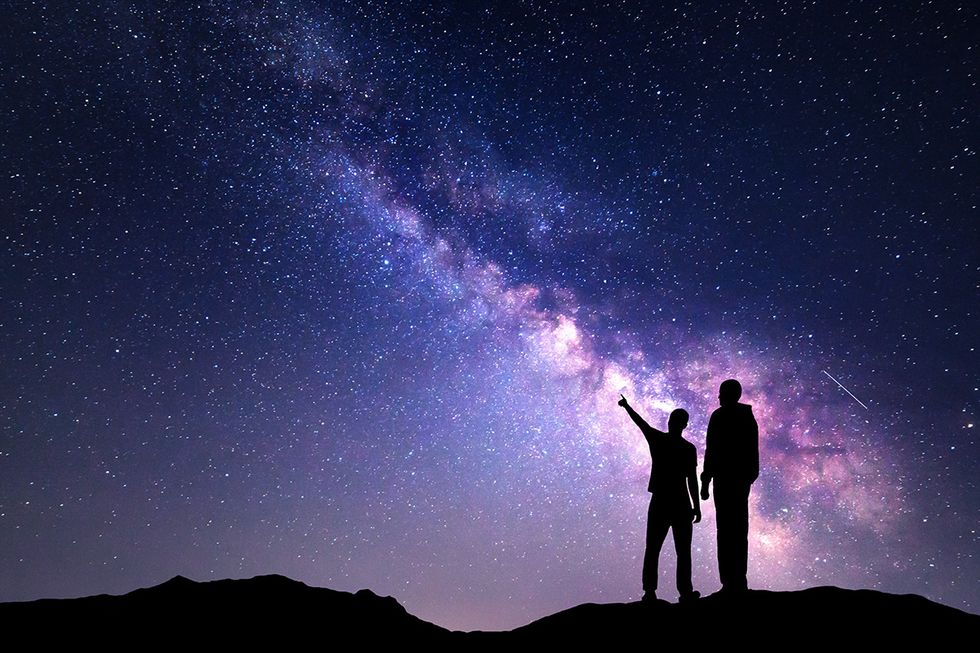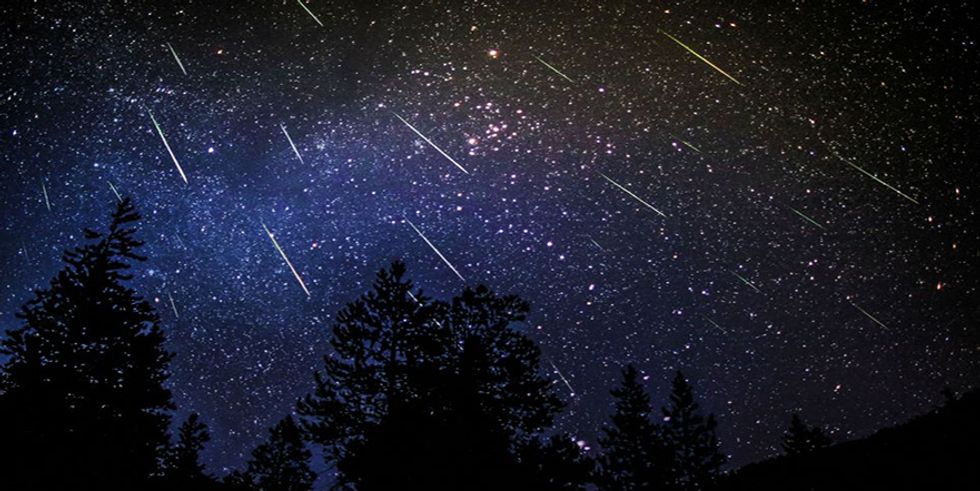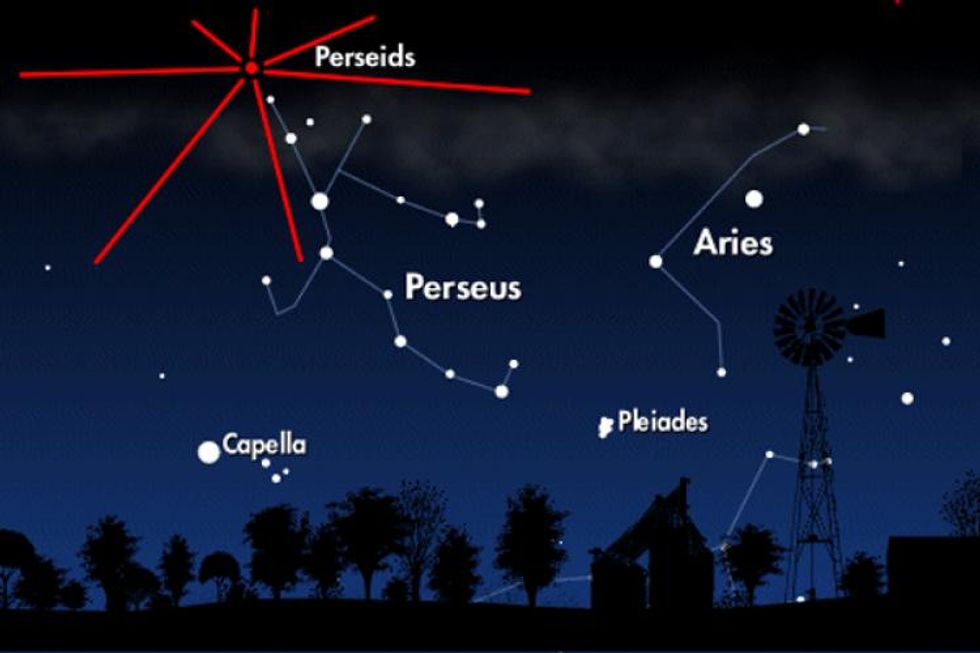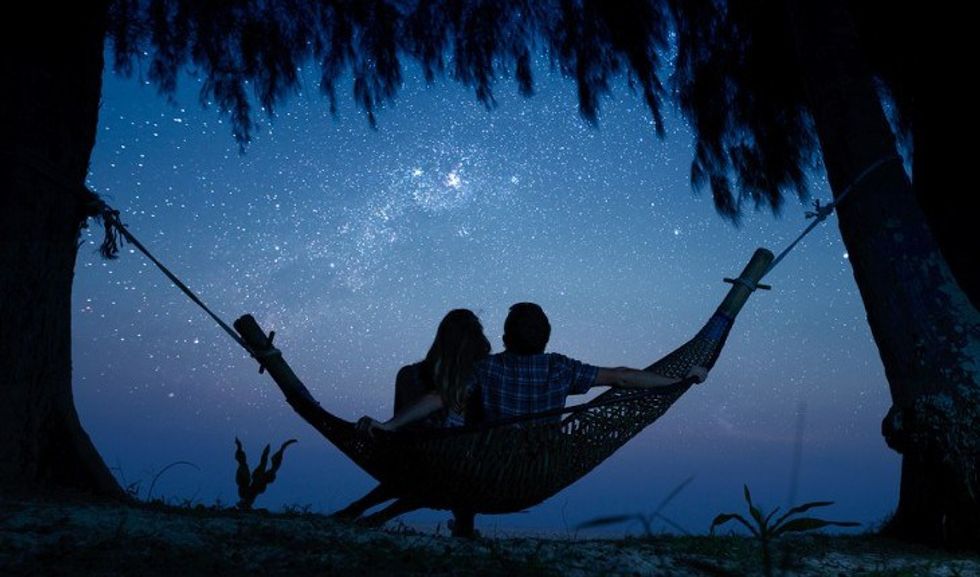"I've seen it raining fire in the sky," "Rocky Mountain High," John Denver.
Starting July 17th and ending August 24th is the Perseid Meteor Shower. This year, the meteor shower will peak on August 12th and 13th. During the peak (when Earth passes through the densest area of the comet's path), you can see 60 or more meteors shooting across the sky per hour.
The Perseids are named after the constellation Perseus, as the meteor shower appears to come from the same location as the constellation Perseus.
Particles ejected by the comet, Swift-Tuttle, form a cloud of debris that constantly circles the comet. The majority of these particles have surrounded Swift-Tuttle for more than a thousand years. When these particles of debris enter Earth's atmosphere, they burn up in a burst of light, creating the shooting stars seen during the Perseid Meteor Shower.
The meteor shower can be viewed in the northern hemisphere between the north-east area of the sky and the part of the sky directly above you.The ideal time to view the shower is right before dawn, according to astronomers. Find an area that is not near artificial lighting (the darker the better). Star gazing is a waiting game, so do not lose hope if you don't spot the meteors right away.
The 2017 Perseid Meteor Shower is the perfect time to lay on the cool grass and watch a magical sight in the summer night sky.









 The minimum wage is not a living wage.
StableDiffusion
The minimum wage is not a living wage.
StableDiffusion
 influential nations
StableDiffusion
influential nations
StableDiffusion












